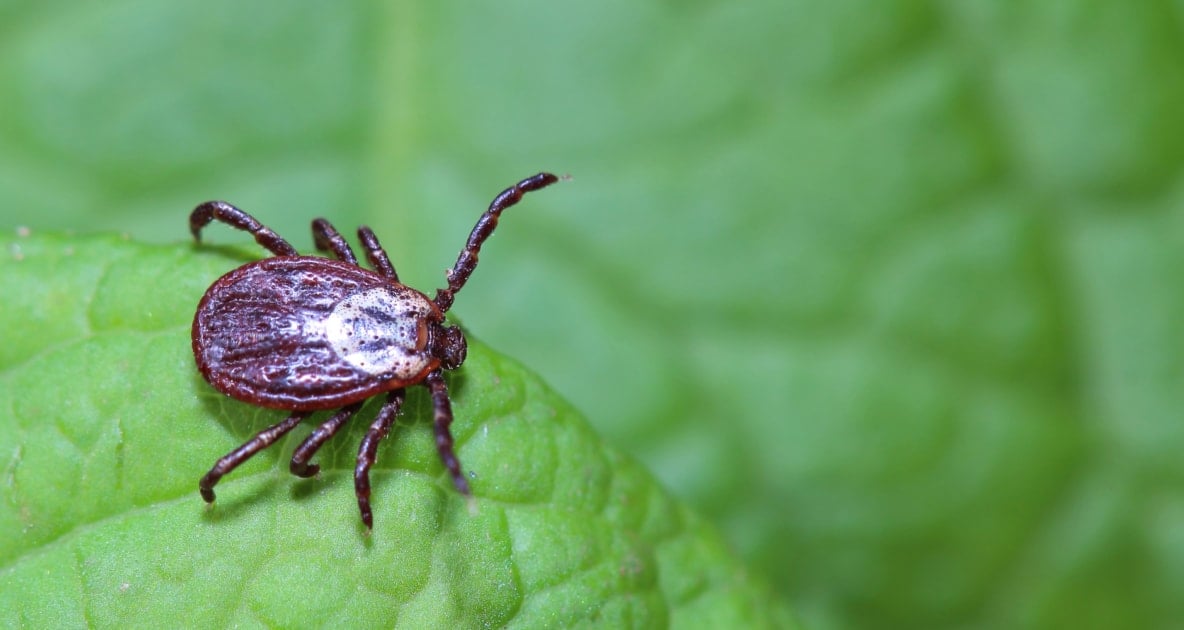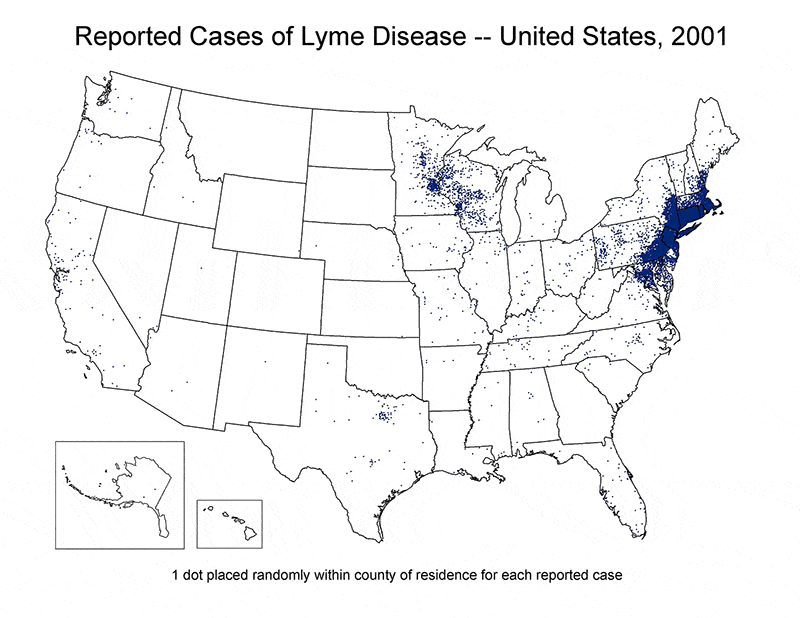Ticked Off!
We all love the outdoors, but threat of ticks and Lyme Disease is real. Author Janet DeCesare shares her story and important tips to help you tick free.

The following is a guest blog by By Janet L. DeCesare, author of the book Ticked Off!:
Planting Seeds of Knowledge for Lyme Disease Awareness
Ticks known to be infected with Lyme disease are becoming more prevalent in the United States, which is prompting officials to issue warnings to hunters and outdoor enthusiasts to keep their eyes open. Much of the US had an extremely mild winter, which means these little arachnids are going to be a problem for many.
Lyme disease is a bacterial infection caused from the bite of a tick. You become infected when you are bitten by a black legged tick that happens to be harboring this bacteria. The ticks are popularly known as deer ticks, but there are rodents in the fields, raccoons, rabbits, squirrels, and birds that roam throughout our yards at night, and any one of them can be a carrier of black legged ticks, as well.
The following map shows the rampant increase of Lyme disease in the US:

Map courtesy of BestValueSchool.org.
Here are a few tips on how to prevent contracting Lyme disease:
1. Avoid tick-infested areas, such as dense, wooded areas, tall grasses, woodpiles, especially in May, June, and July.
2. Wear long pants tucked inside of your socks or boots and a long-sleeved shirt tucked inside your pants.
3. Wear white or lightly colored clothes, so you can easily spot ticks.
4. Use an insect repellent that contains DEET on your clothing, sparingly and with caution.
5. Keep areas around your home and garden clear of leaves, brush and tall grass by keeping your grass cut short.
6. Remove vegetation close to your home that may attract deer and put up barriers to discourage deer from coming close to your home.
7. Place bird feeders away from your house to keep ticks they carry, at bay.
8. If ticks are a problem on your property, you may consider having tick pesticides applied to your yard and surrounding areas.
9. If you are in a highly infected tick region, inspect yourself carefully and remove any ticks.
10. After you’ve been outdoors, check yourself from head to toe, behind your ears, hairline, underarms, under your breasts, and between your thighs, they go where it is warm and moist, just beware!
11. If a tick bites you, save the tick and bring it to your doctor for analysis to determine if it may be a carrier of Lyme disease:
12. If you think you may have Lyme disease, look for telltale signs, which in some cases could be a bull’s eye rash, although not everyone will get a rash, and see your doctor fast.
A Personal Reflection from Janet Lee DeCesare:
My wish for all of you is to enjoy the outdoors, because it is a beautiful world we live in. But be cautious with it! I am so grateful to have had the opportunity to share with you my journey. So no matter what detours may enter your life, how you choose to look at them can either strengthen you or deplete your energy and recovery efforts. I choose to think positively and I have grown into a much stronger woman because of it!
I know all too well what having Lyme disease is like to live with; I contracted Lyme in 1995, along with a co-infection called Rocky Mt. Spotted Fever. I was compelled to write a book about my own personal journey and prayed that the struggles I encountered will inspire other Lyme disease victims and their caregivers.
In the process of dealing with this disease, I became very ill, which led me to write in a journal what I was experiencing. Throughout those treacherous years of suffering with a mystery disease that no one understood, or had even heard of, I knew I was in for a battle for survival. It is so important to me to share this information with you because I was not prepared for what I had to deal with. Through understanding and finding doctors who know what Lyme disease is, I am finally accepting my journey and getting on with life. Over time, I have learned that, as my doctor said so eloquently, “Lyme disease does not have Janet; she has it!”
Janet Lee DeCesare is determined to research Lyme disease and work to find a cure. Janet also loves to write, read, crochet, do crafts with her granddaughter, spend time with her family, and sail with her husband. Her goal is to reach out to others who may have Lyme disease and are unaware of it, and to offer hope and inspiration.
This article was published by the Staff at FarmersAlmanac.com. Any questions? Contact us at [email protected].







A few years ago here it was fleas. We were badly infested and it took a long while to get them under control. I couldn’t have guests because the fleas would attack them! Several times on of my neighbors saw a freckle on my leg, (same one each time), and yelled at me for bringing fleas into her home.
I contracted Lyme in June of 2016. I spent a week in the hospital, where I underwent numerous tests including a very painful spinal tap. The doctors were ready to put me in the psych ward because I was raving. They didn’t because my doctor told them I wasn’t crazy and they shouldn’t put me there. I have tested positive for Lyme five times in recent years and have only been sick once. I believe I had Lyme at least twice before this. The doctors I went to had no idea what I had and one of them took one look at me and diagnosed me with the flu, which I definitely did not have. No one tested me for Lyme then. It is only my guess that it was Lyme based in how I felt then and how I felt in 2016.
Be careful out there! Ticks are everywhere and Lyme is the new epidemic! If you have pets be sure they are treated and remember that they can carry ticks into your home. I check my cats and destroy any ticks I find.
Lyme disease and Rocky Mt. Spotted Fever are not the only diseases ticks carry. They also carry Ehrlichiosis- Definition:Ehrlichiae are transmitted to humans by the bite of an infected tick. The lone star tick (Amblyomma americanum) is the primary vector of both Ehrlichia chaffeensis and Ehrlichia ewingii in the United States.
If a tick carrying the bacterium that causes ehrlichiosis has been feeding on you for at least 24 hours, the following flu-like signs and symptoms may appear — usually within seven to 14 days of the bite:
Mild fever
Headache
Chills
Muscle aches
Nausea
Vomiting
Diarrhea
Fatigue
Loss of appetite
Joint pain
Confusion
Rash
Cough
Some people infected with ehrlichiosis may have symptoms so mild that they never seek medical attention, and the body fights off the illness on its own. But untreated ehrlichiosis with persistent symptoms can result in an illness serious enough to require hospitalization.
This happen to me in 2012 and was put in the hospital for 3 days in a regular room, but the day I was to go home, I crashed and was put in ICU for an additional 2 days. Total days after coming out of ICU was 7 days. I still suffer with headaches and I am very sensitive to light. I have to wear dark sunglasses to be able to go out and enjoy the outdoors, even on cloudy days.
Please be careful everyone. Ticks are nothing to play around with. The are horrible bugs.
There is also evidence that lymes disease could possibly be transmitted through bodily fluid, another reason to practice safe sex.
Yep I got Lyme 2x from husband, never was bit but pulled the 2 off of him.
This is a rising epidemic and I see this in quite a few of my patients. Be very careful when outdoors and follow the advice in the article.
Ticks are not insects, they don’t fly or jump, they are arachnids like spiders, scorpions and mites they smell your Carbon Dioxide and latch on to your clothing , Deet is harmful to you, but Lavender essential Oil is not, it may not kill the tick, but it also will not latch on to you either, they don’t like the smell, so they will quickly depart.